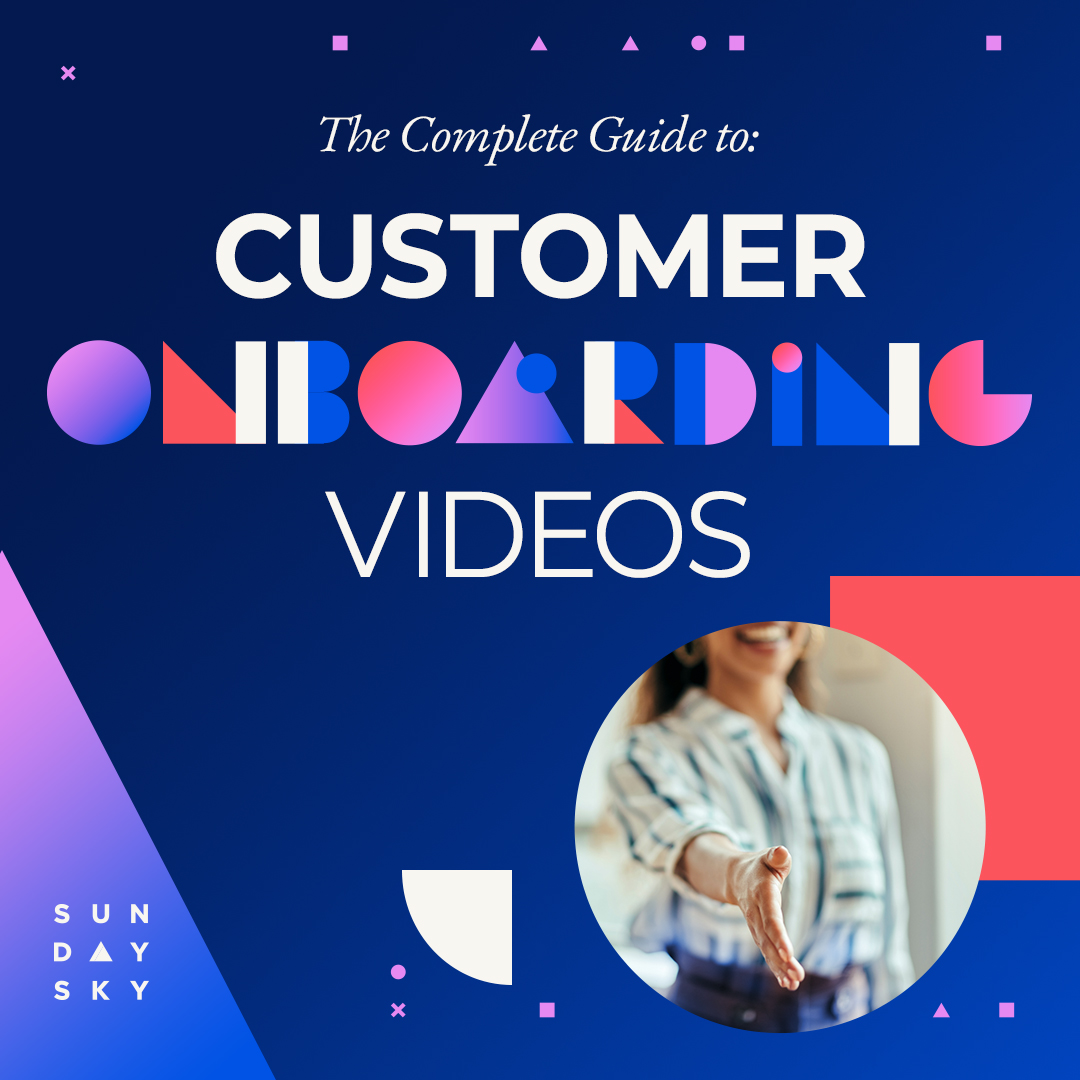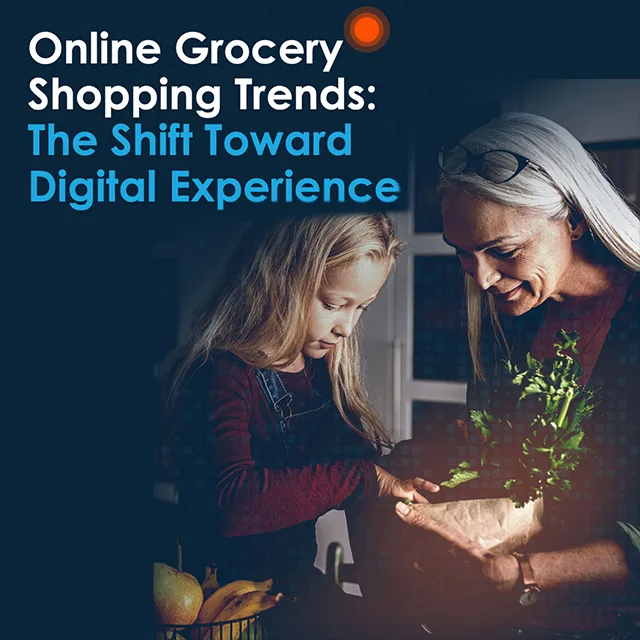Until recently, grocery shopping hadn’t changed much—pushing a cart down grocery store aisles was the default approach for shoppers. Creating a vibrant in-store experience along with print grocery store advertising have been the two key tools that grocery retailers have traditionally used to drive sales and loyalty. Plus, shoppers’ digital adoption for food buying lagged other industries. And this makes sense: food shopping is very personal, and consumers demand competitive prices, trust, and quality.
Then COVID happened. From supply chain interruptions to in-person shopping restrictions, the world of grocery changed. Shoppers had to turn to digital to buy their groceries, and grocers suddenly found that they needed to implement or upgrade ecommerce sites to meet the demand and win consumers’ trust.
As the world adjusts to a post-COVID reality, providing a satisfying digital experience—the online interaction between consumers and brands—is the way forward to building on the gains grocers have seen over the past year-plus. The online grocery shopping trends that emerged during lockdown will continue post-pandemic.
The Shift Online: Where Is the Grocery Industry Heading?
Industry publication Grocery Dive writes, “The long-forecast online grocery boom happened all at once in 2020. Now, experts say, it’s time for grocery retailers to improve their platforms and also make online order fulfillment more efficient.”
The Forrester report The State of the US Grocery Shopper—COVID 19 says,“rocery store executives need to understand how their customers’ expectations and behaviors around grocery shopping have changed in the short term and how they will evolve in the long term.” Grocery ecommerce adoption benefited from the huge increase of remote workers who were no longer stopping for groceries on their way home from work, closures and/or restrictions on restaurants, and a big uptick in at-home meal prep.
While COVID restrictions did temporarily curtail shoppers’ behaviors, it has created new expectations and demands. To keep those grocery carts—online or off—filled, it’s now up to grocery stores to innovate and digitally match in-person shopping experiences.
Even once stores are fully reopened and shoppers feel comfortable spending more time inside them, these online grocery shopping trends are here to stay. While the pandemic forced consumers who had been ecommerce hesitant to try digital tools for food purchases, they found they like the convenience and ease.
Forrester predicts that this is the future of grocery shopping. Consumers will select stores that make their lives easier, and offer benefits and competitive pricing. Grocery Dive says 2021 will be the critical year for grocers to solidify and extend the gains in online that they won last year for sustained growth. Strengthening digital offerings will be crucial, they say, to maintaining customer loyalty. Grocery retailers must approach online shopping as a seamless part of the entire customer experience.
Online Grocery Stores Are Seeing an Influx of New Shoppers
The influx of online grocery shoppers propelled by COVID spans generations. Already comfortable with ecommerce, younger generations easily adopted online grocery shopping. Older generations who have historically been hesitant to buy online flocked to digital and curbside pickup or home deliveries. Shoppers have also been very concerned about health and safety during the pandemic, and they’ve changed buying behaviors and redirected some of their food budget to ensure they and their families are safe.
According to Forrester, 34% of US adults will keep using curbside pick-up once COVID restrictions are removed. However, they note that the two big barriers to online grocery shopping are delivery fees, and the impression that prices are more expensive or not competitive with in-store.
For grocery retailers, these consumers behavior changes, while welcome, do present several challenges. These include implementing grocery ecommerce fulfillment solutions, the need to find new ways to create and strengthen customer relationships by communicating brand offerings, specials, combatting preconceived ideas about online grocery shopping, and conveying how the grocery retailers can add value to shoppers’ lives.
These are related: grocery retailers need a digital communications approach that matches their ecommerce platform. Plus digital communications need to echo the in-person store design that helps shoppers discover new products, motivates them to check out special displays, make impulse cart adds, look for seasonal offerings, etc. Grocers need to utilize new technologies and platforms, like video, to engage shoppers with personalized communications and convey how they can make shoppers’ lives easier and make grocery shopping more convenient.
The Future of Grocery Shopping is Powered by Technology
As online grocery trends develop, technology will continue to be a significant and growing driver in grocery buying. Expect to see continued growth in online grocery ordering amongst younger generations, says Forrester:
“Willingness to shop for groceries online splits across generational lines: About half of Generation Z (56%) and Millennials (48%) say they’re likely to continue buying groceries online post-pandemic; by contrast, only 34% of Generation X and 18% of Baby Boomers expect to do the same.”
The last two percentages may look intractable, but they present opportunities to encourage reluctant online grocery shoppers to increase their ecommerce buying. Even apart from COVID, the consistent decrease in print publications where grocery retailers would place weekly flyers means that grocery store advertising must move to digital.
Another shopper behavior that has changed due to COVID is the use of digital and contactless payment technologies. Shoppers in-store feel more comfortable with touchless payment terminals for hygienic reasons, according to Forrester.
Grocery retailers’ curbside pick-up must be reliable and easy for shoppers. Grocers can win them over with good communications—letting customers know when their orders will be ready, and if there are any substitutions or unavailable products. And across devices, ecommerce must be intuitive, simple to use, and secure. The more convenient shoppers find digital buying, the more likely they’ll continue to use ecommerce for buying food.
Digital platforms are an excellent tool to strengthen customer relationships and customer loyalty, while providing grocers the opportunity to deliver a digital marketing return while strengthening their brand awareness.
Grocery Shopping Experience Is Omnichannel
Forrester’s research found that 37% surveyed shoppers still prefer shopping themselves in a store because they are frustrated with doing it online. There is, obviously, room for improvement. The future of grocery shopping will be omnichannel—a customer-centric digital approach that provides a seamless online shopping experience.
Amongst U.S. adults who are already active online, almost half already belong to a store loyalty program. Store apps are also popular. So there is already an audience primed for better omnichannel digital experiences.
Competitive grocery retailers are expanding their omnichannel market efforts to reach those shoppers where they are. So far, shoppers’ responses show that grocers need to do more work to further refine their omnichannel approaches and make the digital shopping experience a pleasurable, and even exciting, experience.
Digital Engagement Strategies: Adapting to the New Environment
Grocery store advertising has changed forever. The digital world may be a new and challenging space for grocers, but adapting is a must. Finding new ways to promote ecommerce at local stores and inform local markets about pricing and sales is one of the biggest challenges for grocery retailers going forward. Forrester Research senior analyst Scott Compton has some ideas for where to get started.
These online grocery shopping trends also present enormous opportunities for grocery retailers to reinforce their customer relationships and further strengthen brand loyalty. They should be using technology to its utmost advantage to improve the customer experience and engagement.
With digital platforms, they can reach shoppers through new channels to engage with them, make them aware of specials or new CPG brands that are relevant to their past purchases and shopping preferences while putting co-marketing dollars to work. Grocers who use digital correctly can position themselves as the go-to authority on everything food-related. They can amplify their value with supplementary resources, like offering multimedia content to assist their customers with meal planning, recipes that use featured products, and video cooking tutorials.
More grocery retailers are now turning to video. Video-powered experiences that are tailored to historical shopper behavior and interests can deliver more value to consumers. They can contain multiple messages in a single video, like supermarket promotions and product information, and encourage purchases both online and in-store with a focus on delivering performance for grocers and improved ROAS.
Meijer: A Case Study in Online Grocery Shopping
Leading grocery retailer Meijer wanted to find a new way to connect with shoppers due to both the decline in print periodicals where their circulars were inserted, and pandemic store limitations. They turned to SundaySky to create a modern approach to store communications with the goal of driving site traffic to its digital ad page and increase in-store foot traffic for big shopping annual events, like back-to-school.
With SundaySky’s Video Experience Platform, Meijer was able to take advantage of its existing creative assets. Doing this gave them the speed and agility to create personalized videos for their customers.
The grocer used a combination of audience targeting, circular content, product, and location data to transform their traditional print circulars into dynamic video advertising experiences with personally relevant information. They were able to offer each viewer their local store information, and curated product suggestions.
The results were outstanding: 10X over benchmark for weekly ad site conversion rate and a 27% lift in store visits over benchmark.
Using Video-Powered Experiences to Supercharge Shopper Engagement & Grocery Ecommerce
Video should be a cornerstone of grocery retailers’ digital customer experiences. SundaySky’s video-powered experiences can help you connect with grocery shoppers and improve sales, omnichannel reach, ecommerce adoption, and in-store foot traffic.
Video-powered experiences deliver value for both grocery brands and their shoppers by providing actionable, dynamic information that shoppers want, quickly and at scale. They help drive purchases, and help grocer retailers maximize their outreach investments and remain competitive.
Learn more about how customer expectations are changing, and what you need to do to meet them where they are and strengthen loyalty and relationships:
- DOWNLOAD the Forrester Research report The State of the US Grocery Shopper
- LEARN from industry experts and access our on-demand webinar Essential Digital Engagement Strategies for Grocery in 2021













